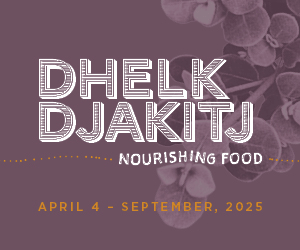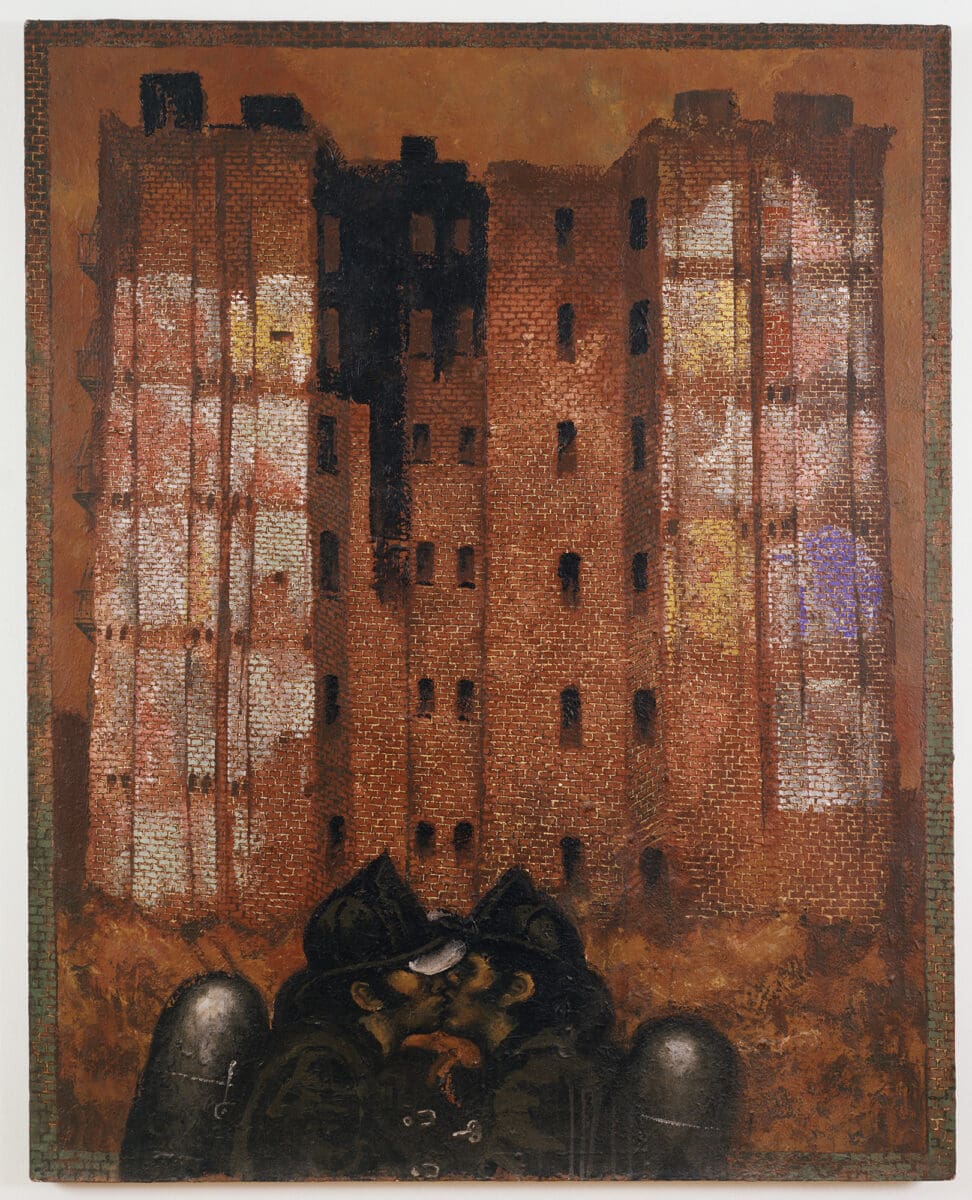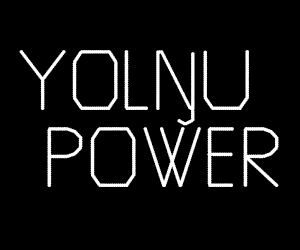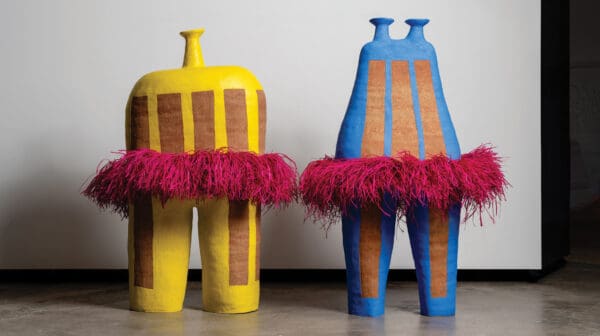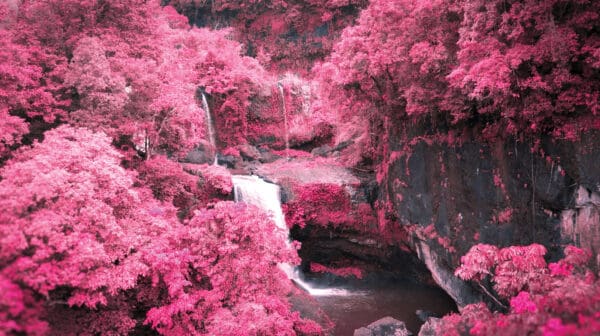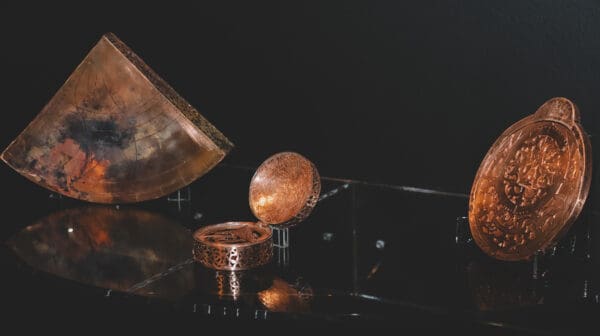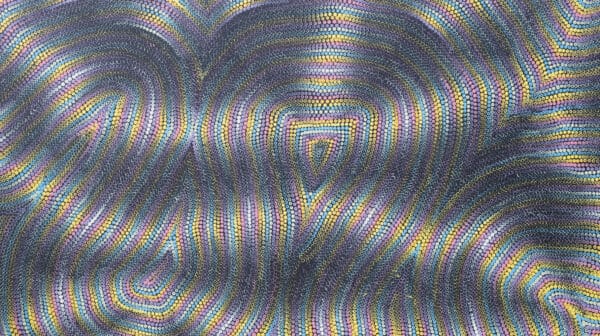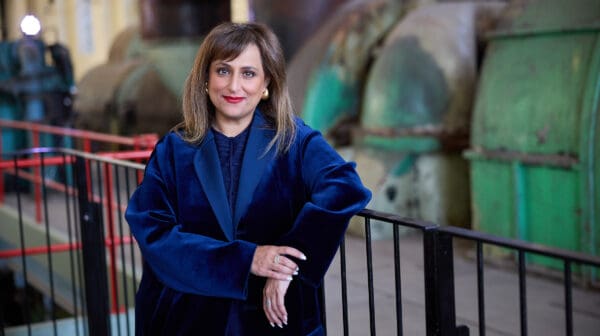From a Japanese queer icon to a Polish film director, and Māori barkcloth to Indian tattoos, we look at nine artists from around the world participating in the 24th Biennale of Sydney.
Nikau Hindin (NZ)
Nikau Hindin is reviving the ancient Māori practice of creating aute, or barkcloth, from paper mulberry plants.

From across the Tasman Sea, Te Rarawa/Ngāpuhi artist Nikau Hindin is representing Aotearoa/New Zealand with her revitalisation of traditional Māori practices. Hindin makes aute (barkcloth or tapa cloth) from paper mulberry plants using ancient techniques that have been out of practice for over a century. It’s a labour-intensive process to transform the bark into a beautiful cloth that she then paints with patterns influenced by Māori weaving designs. Every step of Hindin’s process is intricate, and the resulting works are truly unique. A selection of them are being shown at White Bay Power Station alongside works by fellow barkcloth artists Ebonie Fifita-Laufilitoga-Maka, Hina Puamohala Kneubuhl, Hinatea Colombani, and Kesaia Biuvanua. Nikau Hindin is showing at White Bay Power Station.
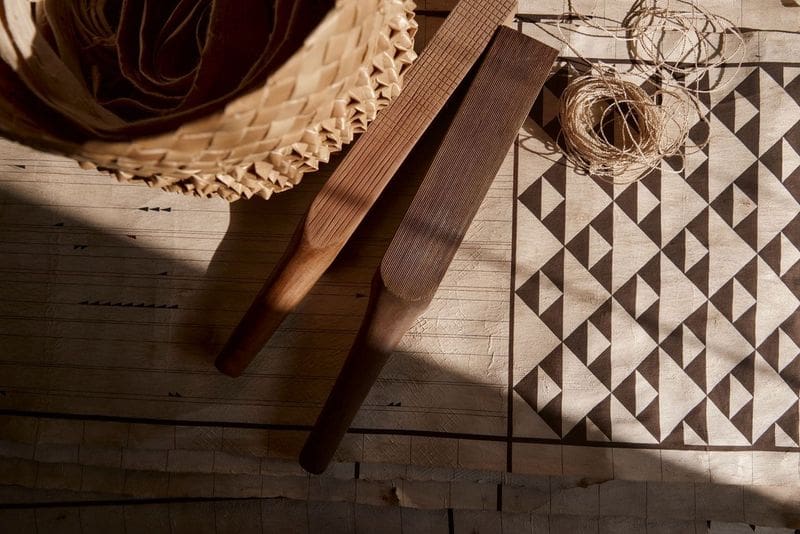
Eric-Paul Riege (DINÉ/NAVAJO, USA)
Diné/Navajo artist Eric-Paul Riege blends performance art with Indigenous weaving.

Eric-Paul Riege is a Diné/Navajo artist from New Mexico whose multidisciplinary practice involves an amalgamation of weaving and fibre art with installation and performance. Known for his sculptures— made from natural and synthetic materials that include wool, cotton, shells, faux fur, and even human hair—Riege uses techniques inherited through his Diné ancestry. A collection of his weavings and looms were featured in the 2022 Toronto Biennial of Art. For the Biennale of Sydney he has a large-scale sculptural installation inside the White Bay Power Station, as well as an exhibition at Artspace, where he will present a series of new works centred on the Navajo concept of hózhó, which celebrates balance and beauty. He will also be performing during the opening weekend celebrations. Eric-Paul Riege is showing at White Bay Power Station.
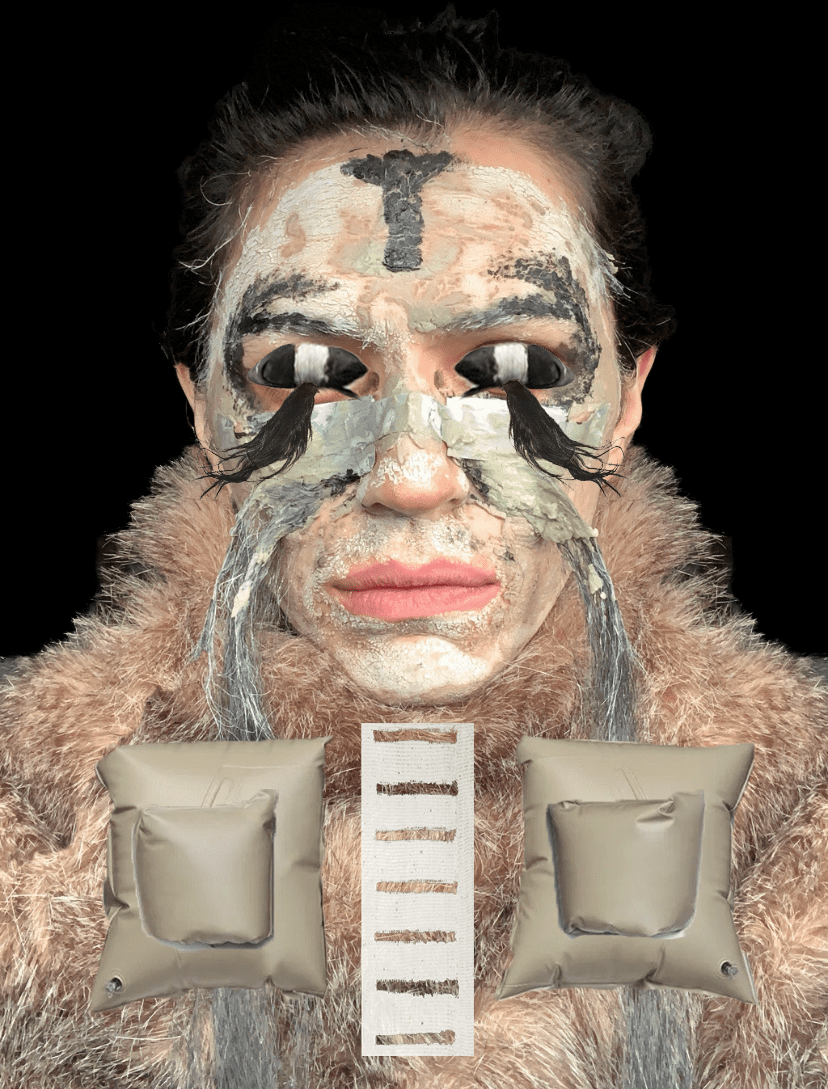
Maru Yacco (JAPAN)
An icon of the Japanese queer community, Maru Yacco makes vibrant art through a variety of media.
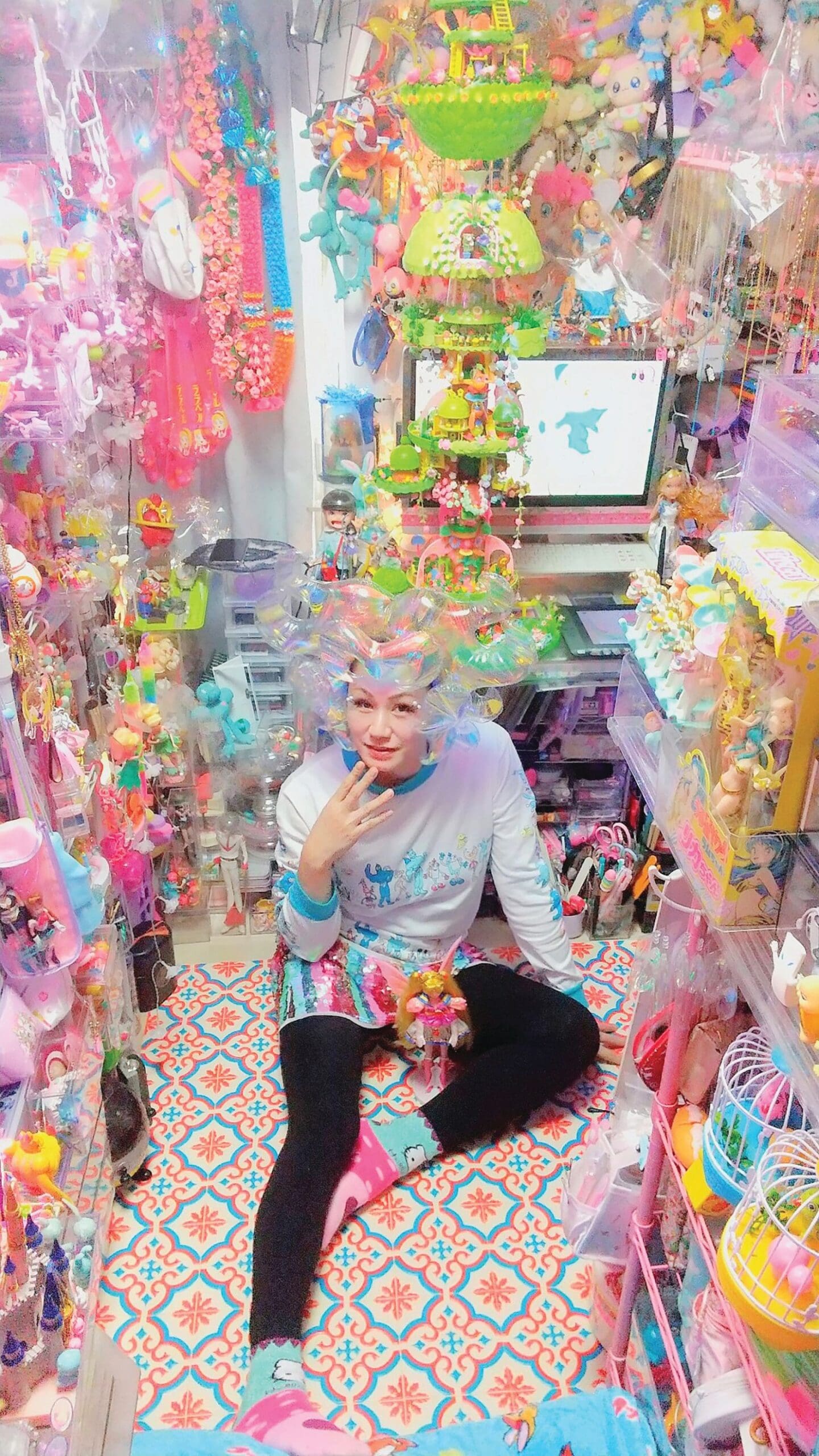
Tokyo-based Maru Yacco creates a vibrant and playful world with her art, using a variety of media—performance, drag, cosplay, video, murals—to produce characters that represent Japanese popular culture and subculture. An icon of the Japanese LGBTQIA+ community, Yacco continually shows just how multifaceted queer culture can be, and made waves at Myth Makers—Spectrosynthesis III last year—the first major survey exhibition on LGBTQIA+ perspectives in Hong Kong. For the Biennale, she has created a large-scale wallpaper installation situated in the Art Gallery of New South Wales. She will also be participating in ‘The Queer Art of Stealing Focus’ event, which explores the history and current use of wearable art. Maru Yacco is showing at the Art Gallery of New South Wales.
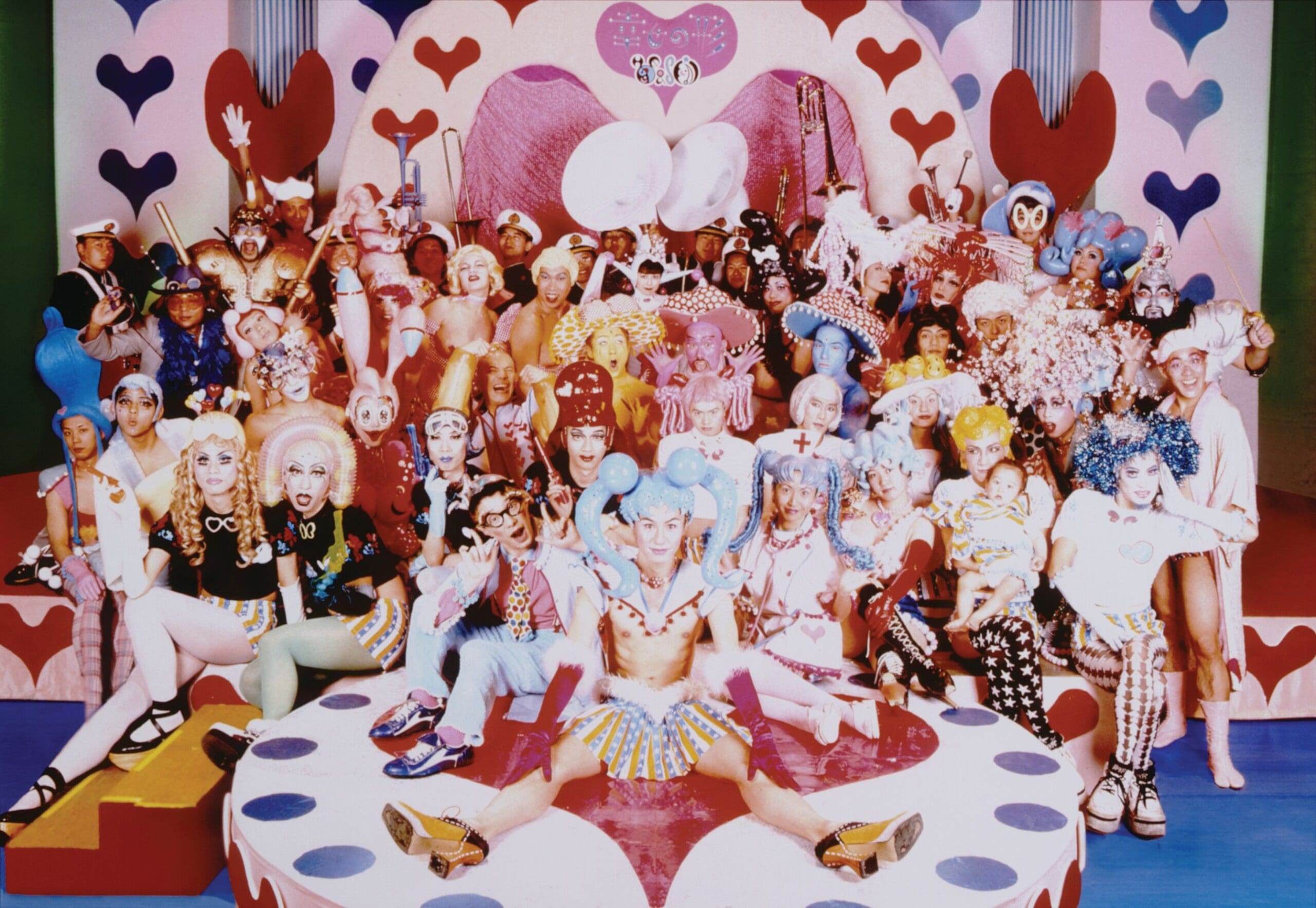
Hayv Kahraman (IRAQ/SWEDEN/USA)
Hayv Kahraman interrogates complex narratives of identity and belonging through paint.
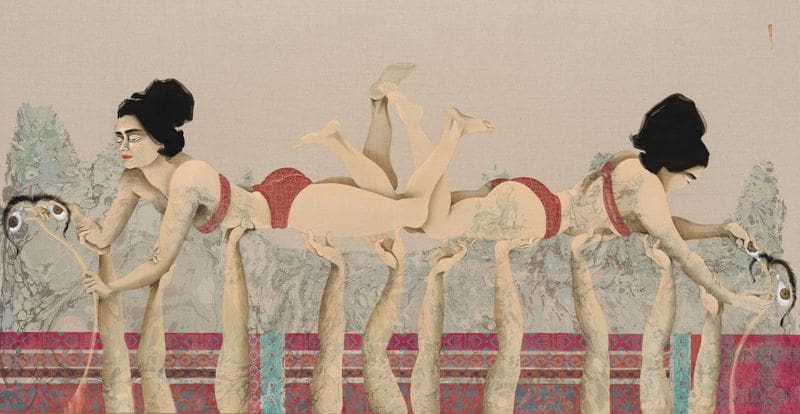
Hayv Kahraman is an Iraqi-American-Swedish artist of Kurdish descent. Born in Baghdad and now living and working in Los Angeles, much of her work explores shifting identities through her depiction of bodies in a state of flux. Disembowelment; leaves that are, on closer inspection, lips; characters consuming eyes that are also petals but look like oysters—there is a macabre quality to Kahraman’s paintings, yet they are undeniably beautiful. She currently has her largest solo exhibition to date on display at the Institute of Contemporary Art San Francisco, and for the Biennale a selection of her works are on display. Hayv Kahraman is showing at the Museum of Contemporary Art.

Candice Lin (USA)
Candice Lin interrogates ecology and colonialism through living and organic materials and processes.

Candice Lin works across sculpture, installation, ceramics, drawing, and video, often incorporating living materials such as mould, mushrooms, bacteria and fermentation to create layered pieces that challenge assumptions around race, gender, and sexuality in a post-colonial setting. She was featured in the 2022 Venice Biennale with an installation that incorporated everything from paintings, living silkworms, mulberry plants, ceramic fragments, and a taxidermied iguana. With a focus on the historical, and an interest in how it informs the present, Lin is a chronic researcher and every detailed aspect of her work serves a purpose. Her Biennale of Sydney display will undoubtedly uncover some complex truths. Candice Lin is showing at UNSW Galleries.
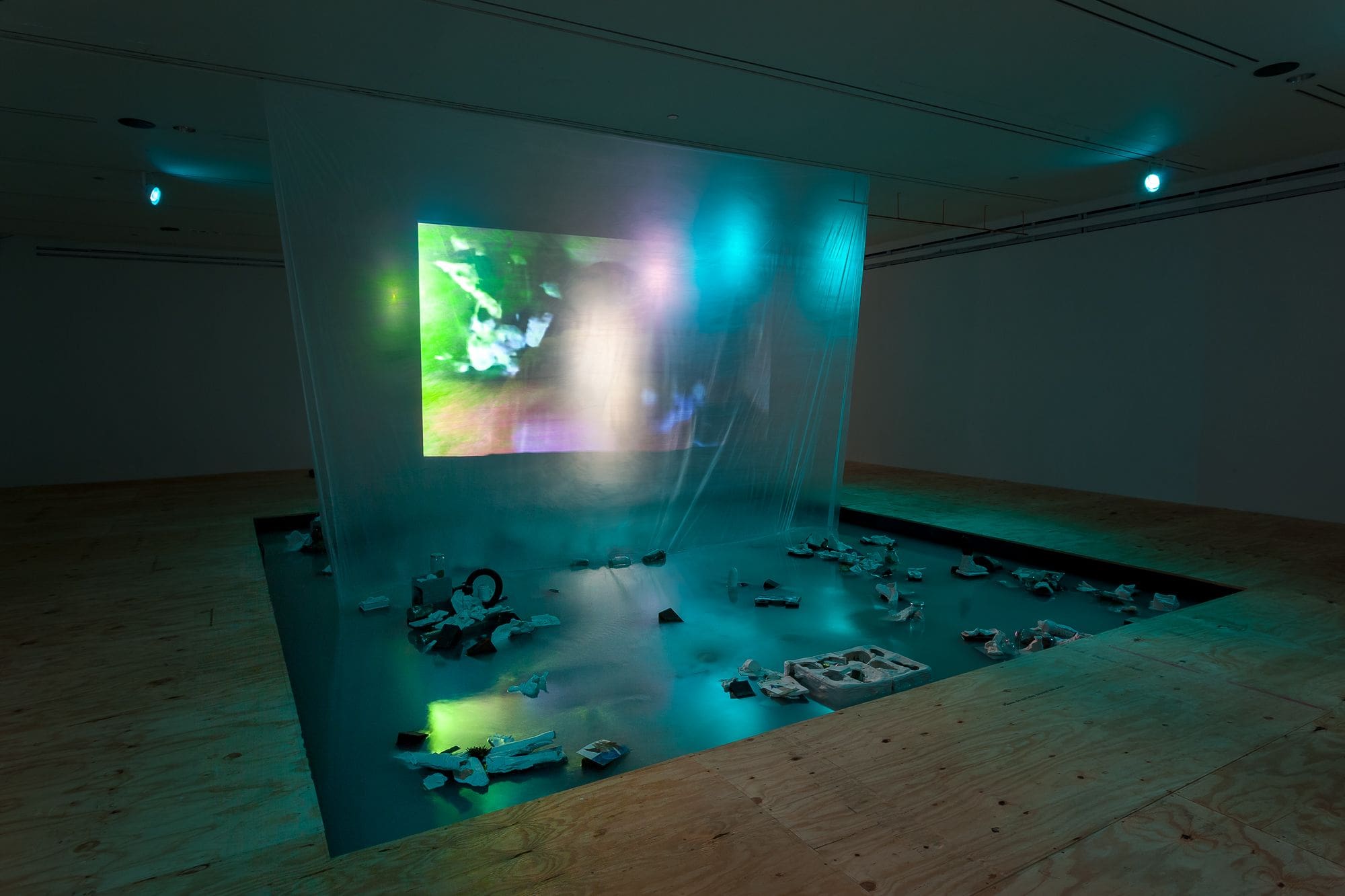
Anne Samat (MALAYSIA/US)
Centering love and liberation, Anne Samat’s weavings challenge Euro-American ideas of art and craft.

Malaysian-born artist Anne Samat creates exquisite weavings that employ the Southeast Asian art of Pua Kumbu weaving—a technique developed over generations by the Indigenous Iban peoples of Borneo. Within this Samat adds items from discount stores into her totemic creations, alongside found objects from cutlery to cassette tapes. Yet Pua Kumba cloths cannot be planned—rather they come to the artist as sacred visions: in this case it’s messages of love. With each piece resonating as an avatar, there is also a liberatory aspect at play, with Samat seeing the weavings as embodying “what one feels to be from within—without fear or coercion”. Her specially commissioned weaving for the Biennale will no doubt effuse these ideas. Anne Samat is showing at the Museum of Contemporary Art.
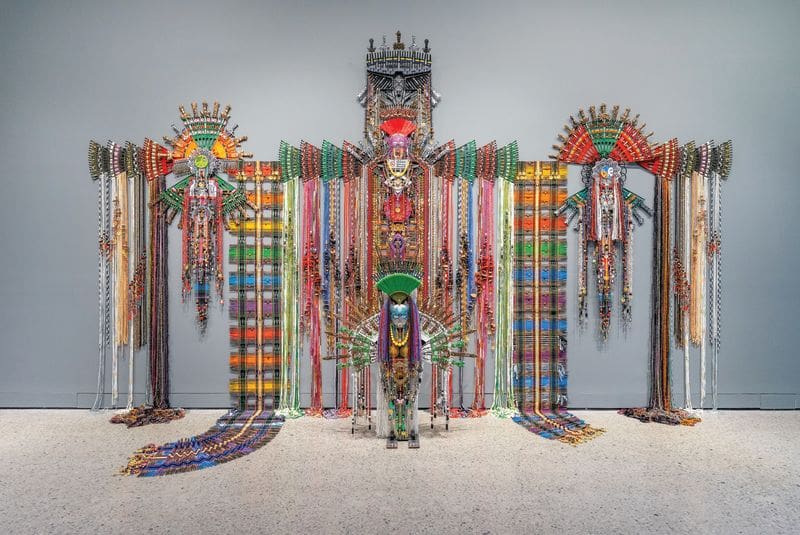
Nádia Taquary (BRAZIL)
With object-sculptures that reflect Afro-Brazilian culture and female protagonists, Nádia Taquary honours her heritage.
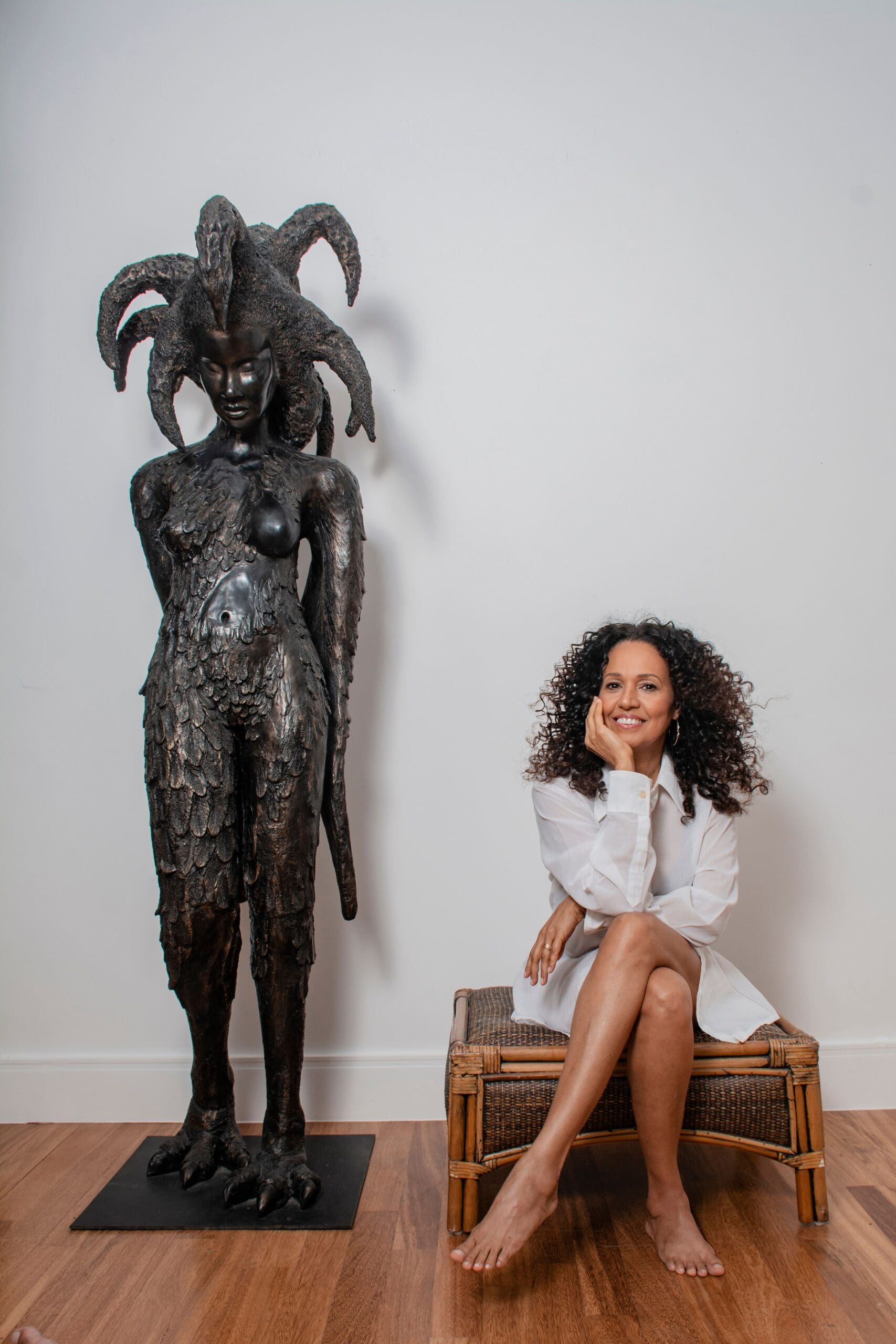
Nádia Taquary explores Brazil’s pre-colonial African heritage through an artistic practice that incorporates sculptures, objects, video and installation. Taquary works with a variety of materials— copper, silver, gold, bronze, crystal beads, cowrie shells, buriti straw, repurposed Ipe and Jacarandá woods—to create, or recreate, artefacts of Afro-Brazilian cultural significance, placing a particular focus on the ancestral heritage of black women and the “black female protagonist”. Born in Salvador and raised in Valença, Bahia, Taquary has exhibited across South America and represents Brazil at the Biennale with a selection of her works inspired by balangandãs jewellery. nádia taquary is showing at the Art Gallery of New South Wales.
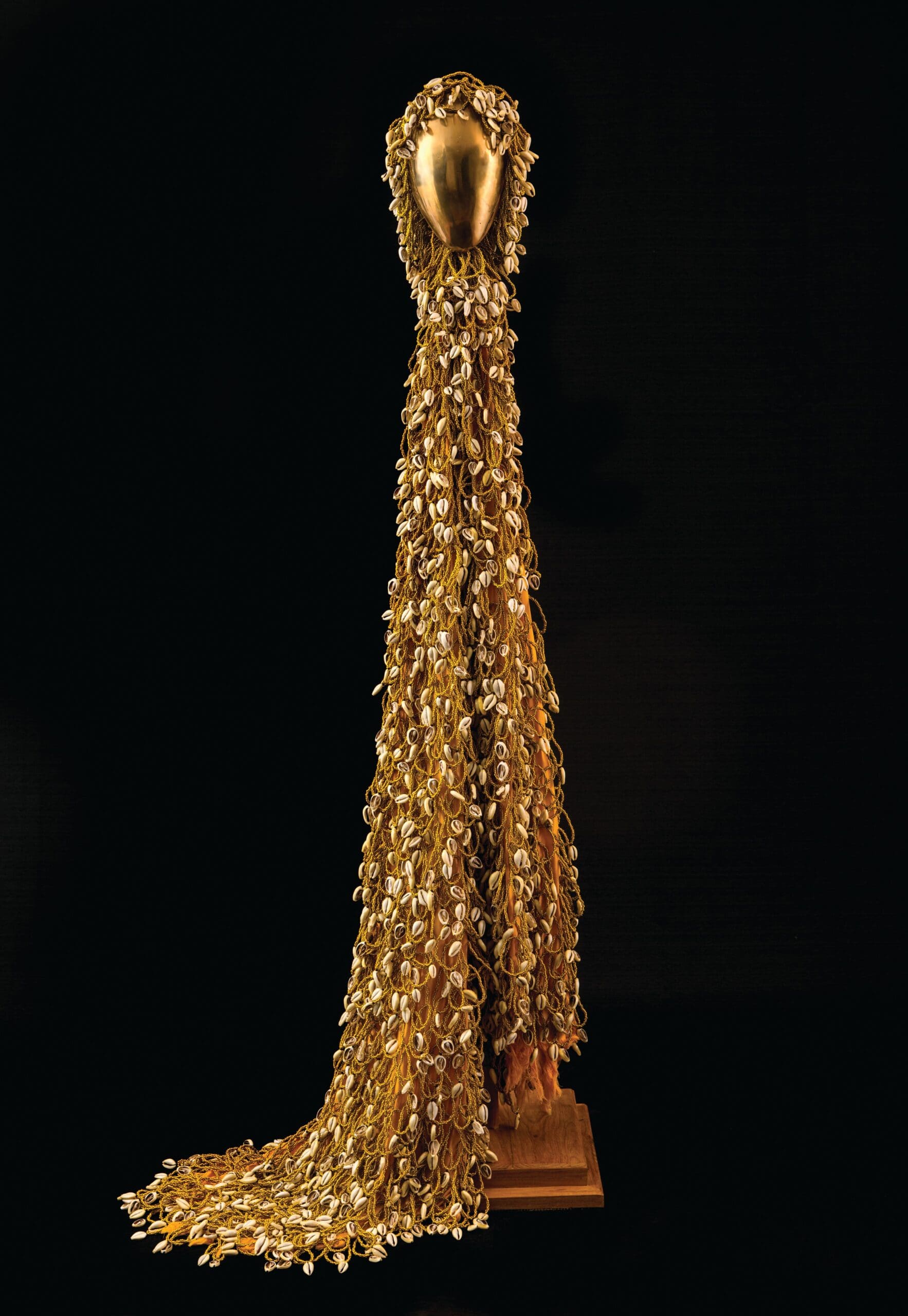
Martin Wong (CHINA/US)
Wearing his trademark cowboy hat, the late Martin Wong painted unparalleled scenes of intimacy and identity.
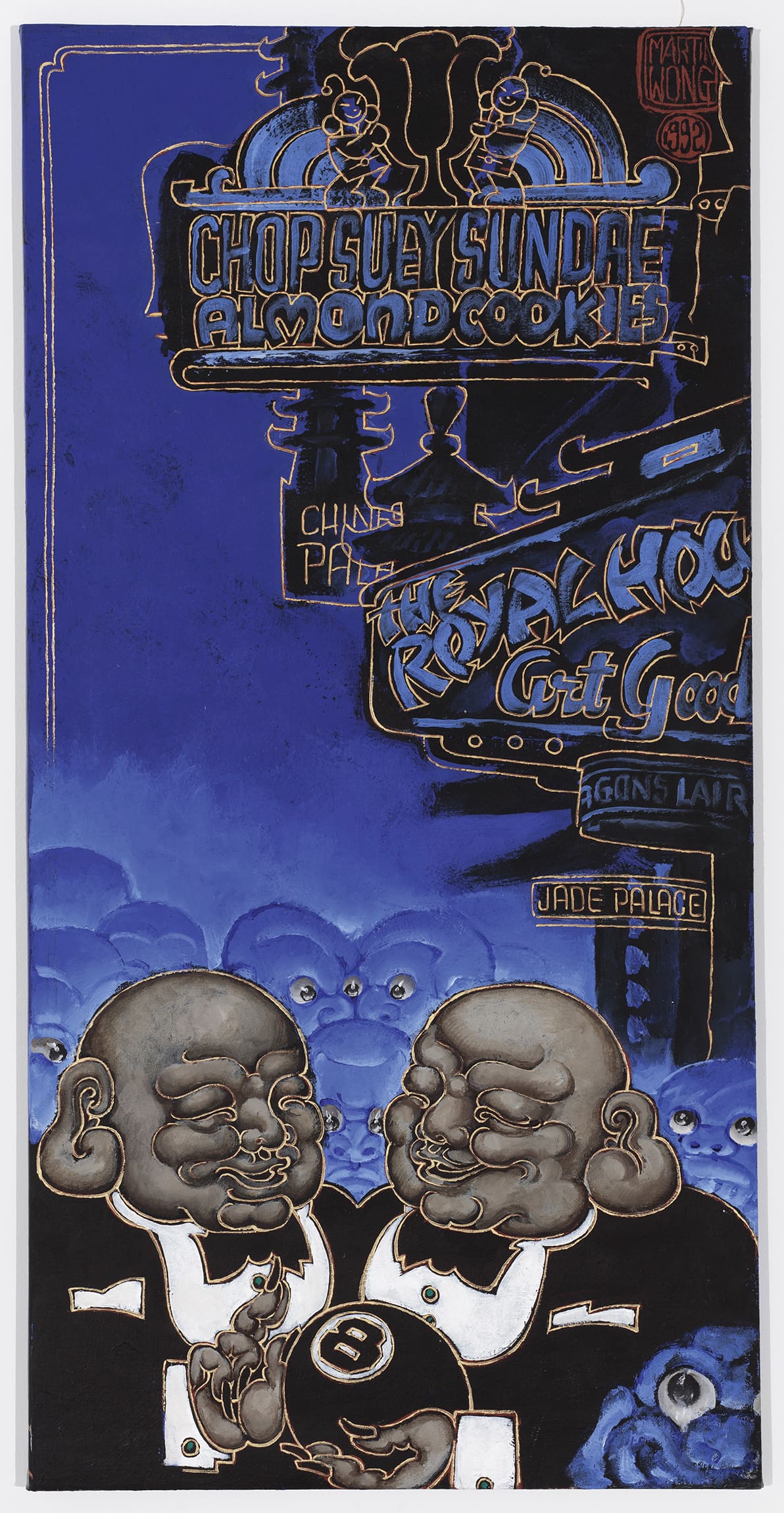
Martin Wong was visionary. The Chinese-American artist, who was largely self-taught, spent the 1980s painting New York scenes, before dying from a HIV/ AIDS-related illness in 1999. In works blending the real with the fantastical, Wong eschews any sense of the bourgeois: there’s graffiti-spectacled handball courts, dank stairwells, lost characters, skateboarders in flight, firefighters kissing. After a much-lauded 2015 retrospective at the Bronx Museum of the Arts, Wong’s witty visions of New York resurfaced, which, as the artist once said, “focus in close on some of the endless layers of conflict that has us all bound together”. Nine of Wong’s paintings are in the Biennale of Sydney, which explore having multiple racial identities alongside celebrating queer sexuality. Martin Wong is showing at Chau Chak Wing Museum.
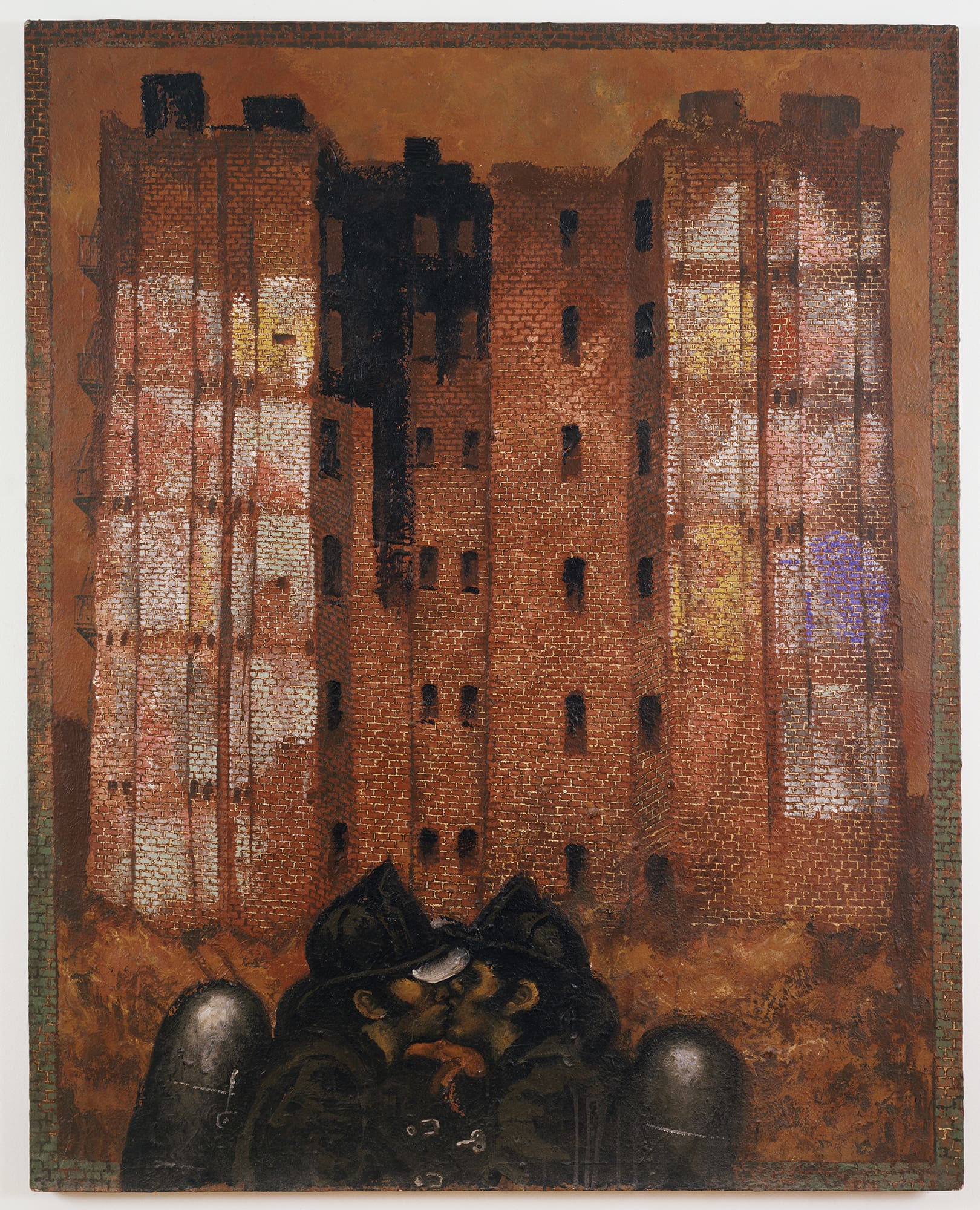
Agnieszka Polska (POLAND/GERMANY)
Taking digital images into unchartered territory, Agnieszka Polska’s art reflects on history, love and time.
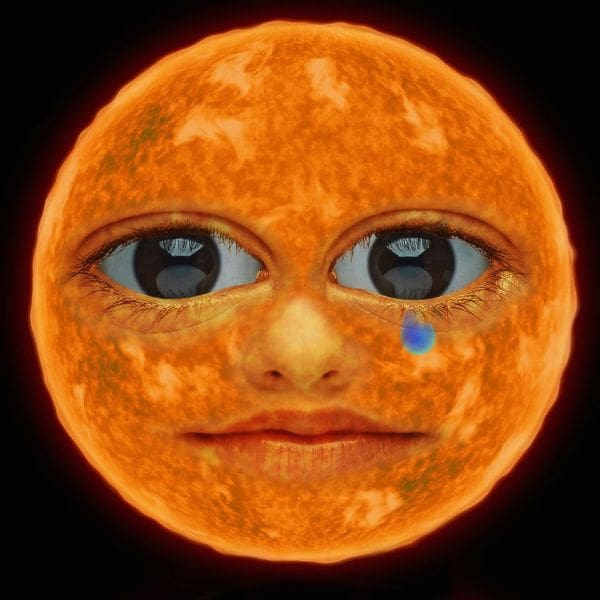
Those living in Melbourne may have recently seen Agnieszka Polska’s brilliant video, The New Sun, 2017, at Heide Museum of Modern Art, where an animated, personified sun addresses the audience with hackneyed jokes, planetary musings, and a clear affection for humans. Known for her work across video, sculpture and film, the Polish-born, Berlin-based artist has garnered significant attention in recent years, exhibiting at the Museum of Modern Art in New York and the Centre Pompidou in Paris, alongside an illuminating New York Times profile. Using digital processes of manipulation and collage, Polska often bases works on found images, looking at history, time, and collectivity—with equal pathos and humour. Agnieszka Polska is showing at UNSW Galleries.


